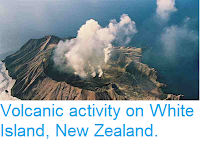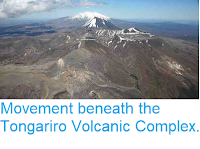Hastings District Council has issued a warning to tourists to keep away from the cliffs at Kidnappers Head (Te Kauwae-a-Māui), a headland at the south end of Hawke's Bay on the east coast of North Island, New Zealand, following a series of rockfalls in the area, including one on 23 January 2019, in which two tourists were swept from the beach into the sea and badly injured. The 23 January event has been followed by two further rockfalls, one on 2 February and one on 23 March, with the later depositing about 500 cubic metres of material onto the beach.
Material deposited on a beach at Cape Kidnappers, New Zealand, following a rockfall on 23 March 2019. New Zealand Herald.
The cliffs at Kidnappers head are made up of a succession of shallow marine Pleistocene sedimentary rocks, principally mudstones and conglomerates, with volcanic ash layers. These are poorly consolidated, and are often undermined by the action of waves on the bottom of the cliffs, which wash away the lower layers, which leads to the rocks above coming down, often in large vertical sheets, due to the low structural strength of the rocks.
Material deposited on a beach at Cape Kidnappers, New Zealand, following a rockfall on 2 Februry 2019. Stuff NZ.
Rockfalls at Cape Kidnappers can expose a variety of subfossils, including shells and occasional Marine Mammal bones, which can attract fossil collectors to the area following rockfalls, despite the dangers. However, the main reason tourists tend to visit these beaches is a colony of breeding Australian Gannets, Morus serrator, which breed in the area between July (when the birds start courting) and February (when the young birds fledge).
An Australian Gannet, Morus serrator, with a chick, at Cape Kidnappers in New Zealand. Wikimedia Commons.
See also...
Follow Sciency Thoughts on Facebook.









